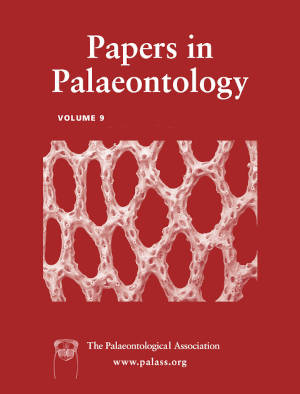Article: Adult branchiosaurid temnospondyls: the life cycle of Xerodromeus gracilis
Publication: Papers in Palaeontology
Volume:
9
Part:
4
Publication Date:
2023
Article number:
e1513
Author(s):
Rainer R. Schoch, and Ralf Werneburg
DOI:
10.1002/spp2.1513
Abstract
Abstract The Branchiosauridae form a clade of tiny newt-like, extinct amphibians of overall larval appearance. Although their status as neotenic (perennibranchiate) forms had long been universally accepted, adult specimens are known from only one taxon that was hitherto referred to as Melanerpeton (Apateon) gracile. Here we study this life cycle in depth, which includes the only well-documented metamorphosis-like transformation in an early tetrapod outside Lissamphibia. Based on various newly recognized features, Melanerpeton gracile is attributed to a new genus, Xerodromeus. Xerodromeus gracilis is characterized by a short postorbital skull table, wide supratemporal, quadrate condyles well posterior to the occipital ones, ossified endocranial elements, carpals, coracoid and pelvis as well as wedge-shaped intercentra and cylindrical pleurocentra, of which the latter are identified for the first time in branchiosaurids. The studied size classes are referred to four phases: (A) integration of jaw and cheek, longer snout; (B) stronger teeth, robust limbs, incipient ossification of exoccipital, coracoid and pelvis, change in dermal ornament; (C) larger gape, wider skull, polygonal ornament; and (D) quadrate, coracoid, carpals and vertebral centra ossified, during which a probably terrestrial adult morph developed. Adult X. gracilis is more massively built than amphibamids, and its non-pedicellate dentition indicates that it was probably feeding on different prey.
